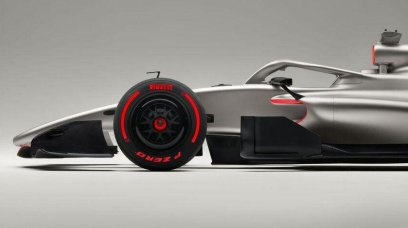A second power unit penalty of the F1 season looms over Max Verstappen, but where will he and Red Bull bite the bullet?
After the Dutchman lost an internal combustion engine (ICE) early in the season to electrical problems in Canada, Red Bull had to change to a fifth ICE in the back of his RB20 earlier than planned.
That sacrifice was made at the Belgian Grand Prix, resulting in that 10-place grid penalty. Since then, five grands prix have been run.
Completing the final six grands prix with the additional power unit is virtually out of the question. But what is the ideal moment to change engine, and thus incur another grid penalty?
For reference, In F1, drivers and teams are restricted in how many power unit (engine) components can be used per season before grid penalties occur.
For the ICE, TC (turbocharger), MHU-G and MGU-K, there is a penalty-free limit of four. For the ES (energy store) and CE (control electronics), there is a limit of two. Seven exhausts may be used before a grid penalty follows.
If you go over the component limit, thus extending your pool of parts, a 10-place grid penalty per changed item outside the allocation will be incurred. Once the pool limit is broken for that item, each individual change earns a five-place grid drop.
With six race weekends to go, including three sprint races, it is almost inevitable that Verstappen will have to further extend his pool of power unit components. But what is the ideal moment for this power unit change, given the associated penalties?
Viewed by others:
Harsher penalty awaits Norris
Ideally, the penalty is taken at a circuit that allows for overtaking, in order to easily make up the lost grid positions during the race.
The Circuit of the Americas is a good example, but in Verstappen and Red Bull's case, to change this weekend might be too early, as that power unit would still have to run six grands prix and three sprints, so essentially seven full-length races.
The Mexico City Grand Prix is also not likely due to the nature of the circuit, which does not necessarily offer many distinct overtaking opportunities, something that is also due to the high altitude and thin air. That makes DRS considerably less powerful, in turn making overtaking more difficult.
Both COTA and Mexico are also places where Verstappen can, and RB20 upgrade pending, should do well. If that were different, it may have been more tempting for Red Bull to pull the trigger early.
The most logical option, therefore, seems to be the Sao Paulo Grand Prix. The Brazilian circuit offers two distinct overtaking opportunities, including on the long, somewhat twisting straight from start-finish where DRS can make all the difference.
Lewis Hamilton provided the blueprint in 2021 and at that point, the power unit would only need to run for four grands prix and two sprints.
Not only will that power unit have fewer competitive miles on it than previous ones, but having the freshest power unit could prove key in a title fight that threatens to go down to the wire.
What's more, Verstappen's main rival, Lando Norris, is also on the verge of his own grid penalty.
With all specific parts, the McLaren driver has already used the maximum number of components allowed, so if he has to extend his pool, he will receive, at a minimum, a 10-place grid drop.
That in itself is a saving grace for Verstappen, who could look to mirror Norris but suffer half the punishment.
Also interesting:
Join RacingNews365's Ian, Sam and Nick, as they look ahead to this weekend's US Grand Prix! Max Verstappen and Lando Norris' title fight is a lead topic, as is the pressure on Red Bull's upgrade for COTA. Lewis Hamilton, Liam Lawson and Toyota's return are also discussed.
Rather watch the podcast? Then click here!
Don't miss out on any of the Formula 1 action thanks to this handy 2026 F1 calendar that can be easily loaded into your smartphone or PC.
Download the calenderMost read
In this article














Join the conversation!